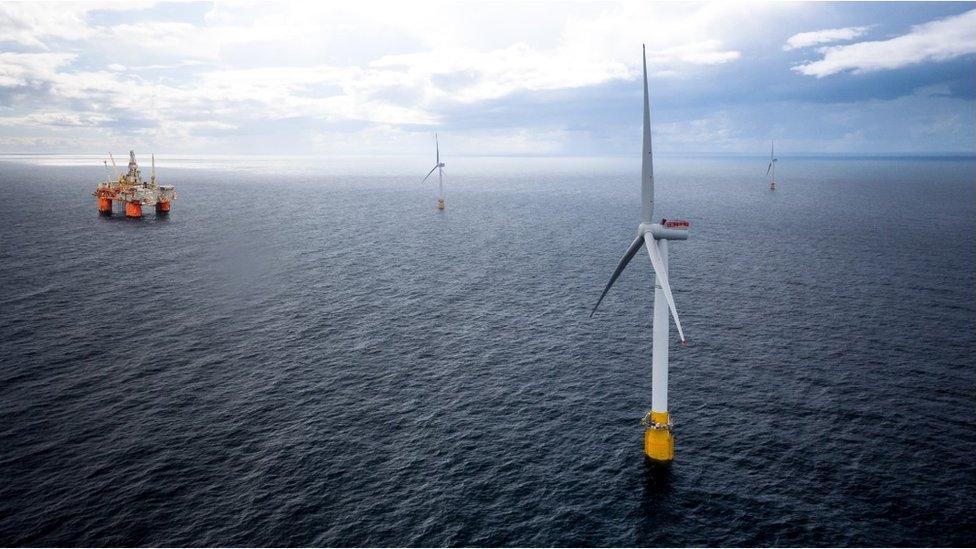Climate change: How can you make your home eco-friendly?
- Published
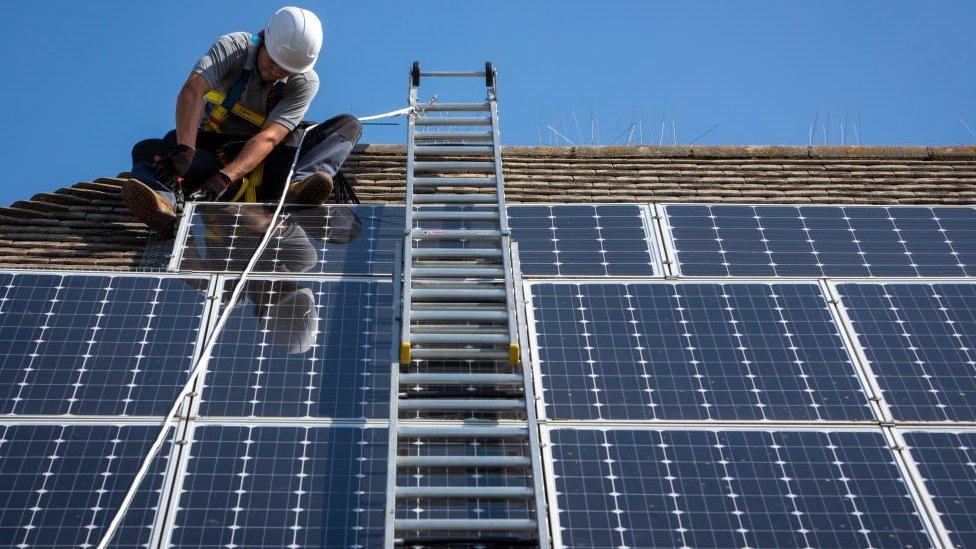
Some measures are eco-friendly, but less budget-friendly
With new homes being built with eco-friendly design in mind, older properties can prove the worst offenders when it comes to their carbon footprint.
But making alterations to your existing home can be costly, running into hundreds or even thousands of pounds.
So, how can homeowners make their properties kinder to the environment while keeping costs down?
We spoke to the Welsh government and Energy Saving Trust to find out.
How do you make an old house eco-friendly?

Wall insulation reduces heat loss, reducing a home's carbon footprint
All homes have the potential to become more energy efficient and reduce carbon emissions.
The Energy Saving Trust's head of UK energy Laura McGadie said the first step in cutting carbon emissions - and bills - was to take control of your heating.
"Make sure you understand your heating controls and set them to only heat the rooms you need, when you need them, and not above the required temperature," she said.
"To do this effectively, you will need a decent set of heating controls which, for most central heating systems, includes a timer or programmer, a room thermostat and thermostatic radiator valves. Fitting and using these properly could save you £75 a year on your bills and reduce your carbon emissions by 320kg."
For a quick and cost-effective improvement, insulate any exposed hot water pipes, along with your hot water cylinder if you have one.
Around a third of heat in an insulated home is lost through the walls, according to the Energy Saving Trust.
Most homes in the UK have either solid walls, which can be insulated from the inside or outside, or cavity walls, which have a gap that can be filled with insulation.
Installing solid-wall insulation could save a gas-heated, semi-detached home around 930kg of carbon dioxide emissions a year.
The Welsh government said changes should be tailored to each home.
"The changes are likely to be a mixture of improvements to the building fabric (better insulation), changes to the heating systems (low carbon heat system), together with energy storage and renewable energy generation such as batteries and solar PV," said a spokesperson.
"The electricity supplied by the grid is becoming more environment-friendly every day as additional renewable generation increases. This in turn makes homes greener when using that electricity.
"Choosing a green energy supply or a flexible low-carbon tariff is a simple step towards greening your home."
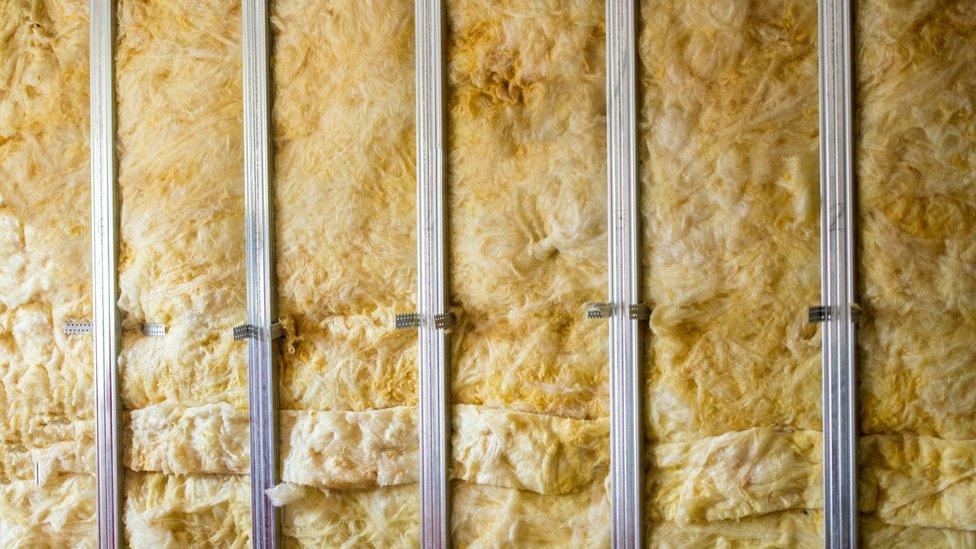
Wall insulation is an effective step in limiting heat loss
How much does it cost to make my home eco-friendly?
The costs of reducing your home's carbon footprint can vary from a few pounds for better draught proofing or using low-energy lightbulbs, to hundreds of pounds for loft insulation or a larger investment of thousands of pounds for renewable generation such as whole-house insulation systems.
Schemes are available to support lower income households meet the cost of home energy efficiency improvements, such as the Welsh Government's Warm Homes Programme.
This has led to more than 61,400 lower-income households improving their home energy efficiency, reducing fuel bills and carbon emissions.
Welsh households can also benefit from the UK government's Energy Company Obligation Scheme, which provides insulation and low-carbon heating to lower income households.
Will it make my home ugly?
Some eco-friendly changes to homes, such as solar panels and external heat pumps, have been criticised as being bulky, ugly or noisy. So how can homeowners make their house more energy efficient without compromising on style?
A Welsh government spokesperson said: "Using a whole-house survey as the basis for any decisions, the range of potential measures would be identified that work for that house.
"The homeowner would use the suggested measures that worked best for them to achieve energy efficiency and acceptable aesthetics."
Will my bills be lower?
Currently, 22% of the UK's carbon emissions come from our homes, with three quarters of this coming from our heating.
According to the Welsh government, energy efficiency improvements would reduce bills and make properties both more affordable for the current occupants and potentially more attractive for those in the future.
On average, households benefitting from improvements under the Warm Homes Programme have reduced their annual household fuel bills by an estimated £280.
Smart heating controls offer more options for managing home heating systems and are available for all types of heating, including electric storage heating.
Some systems include advanced features, such as automation, to help determine exactly when to turn the heating on and off, saving on energy use.
The Watkinson family live self sufficiently in Wales
Homes can lose heat through gaps around windows and doors, floorboards or through chimneys, which tends to occur more often in older properties. Draught-proofing these areas can be an easy and cost-effective way to save energy and reduce costs.
"Quick and simple DIY solutions include fitting foam strips, plastic seals or brushes around doors and windows," said Ms McGadie.
For a quick easy and cheap fix, gaps between floors and skirting boards can be sealed with sealant bought from any DIY store or online.
Professional draught-proofing could cost around £200, according to the Energy Saving Trust (EST).
One of the best ways to cut bills is to generate your own electricity, said Ms McGadie.
Solar electric panels, also known as photovoltaics (PV), allow you to generate your own renewable electricity. Although a south-facing, unshaded roof is the most effective, others can still benefit.
A roof area of around 20 square metres could generate as much electricity as you use, averaged out over the year, says the EST.
Solar panels will typically cut your electricity bills by between 15% and 35% and you can earn extra by selling surplus electricity back to the grid.
To maximise your savings, you could install a battery to store your solar-generated energy to use in the evening.
But the costs of installation are high, with solar panels costing an average of £5,940 in the UK, according to government data released earlier this year.
Do I need planning permission?
Simple draught-proofing and insulation measures would not need permission, but for any major changes, such as external wall insulation, you will probably need planning permission from your local council and need to tell your insurers.
There are restrictions on solar panels to minimise the effect on the appearance of the building and the amenity of the area.
According to the Welsh government, to reduce their visibility "they should not be installed above the ridgeline of a roof and should not project more than 200mm from the surface of a roof or wall".
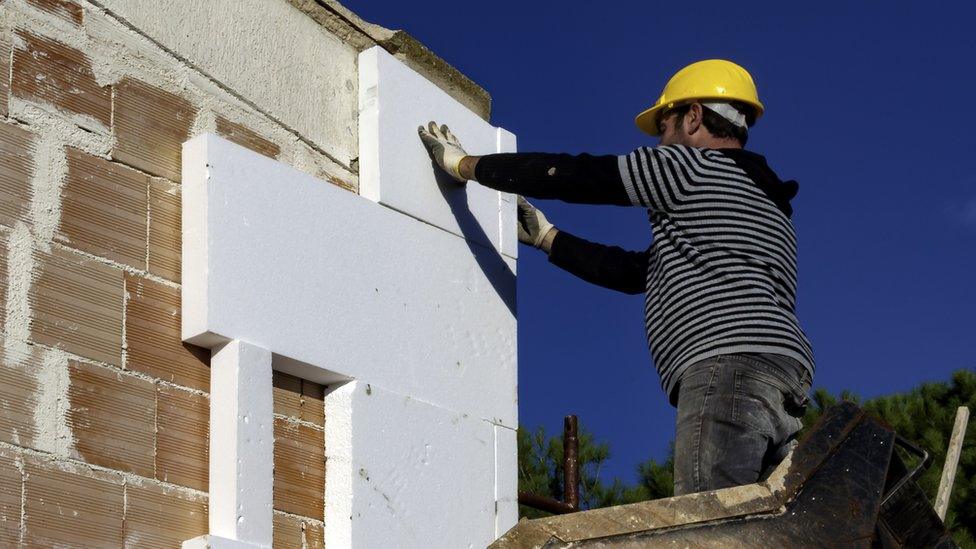
Adding external wall insulation will likely require planning permission
Panels on listed buildings need planning permission and are likely to need an application for listed building consent.
A Welsh government spokesperson said: "In a conservation area, or in a World Heritage Site, planning consent is required when panels are to be fitted on the principal or side elevation walls and are visible a highway.
"If panels are to be fitted to a building in your garden or grounds, they should not be visible from the highway.
"On a flat roof, solar panels cannot be sited within a metre of the external edge of the roof; or protrude more than a metre above the plane of the roof."
How can the Welsh government help homes get greener?
In Wales, the Optimised Retrofit Programme aims to make more than 1,700 homes more energy efficient.
It has been trialling a combination of building fabric improvements and low and zero-carbon technologies such as solar panels, battery storage and heat pumps, to see what difference this makes to a home's energy use.
Minister for Climate Change Julie James said: "This scheme is essential to tackling climate change and driving down household energy costs now and in the future. Helping people, including those on lower incomes, to reduce their fuel bills while keeping their homes warm."
- Published26 January 2021

- Published20 January 2020
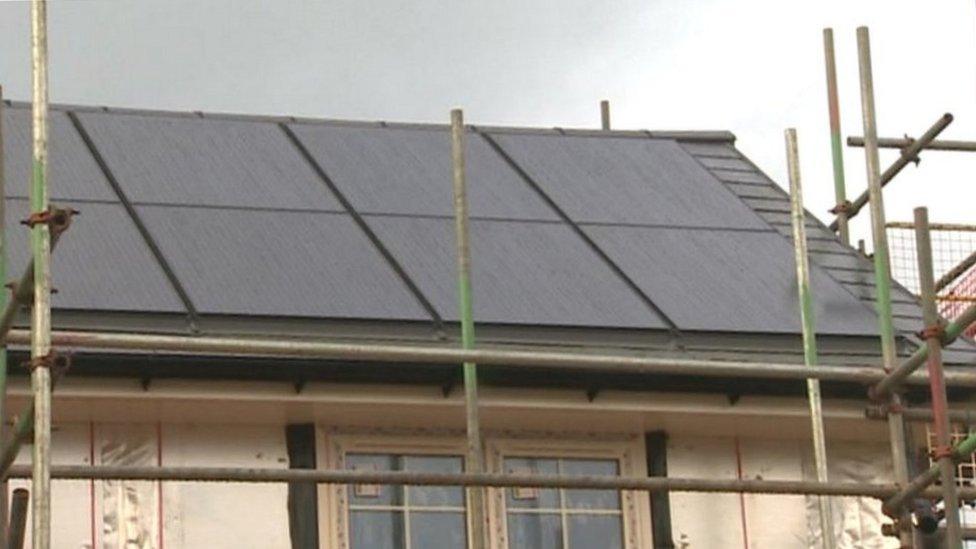
- Published5 February 2021
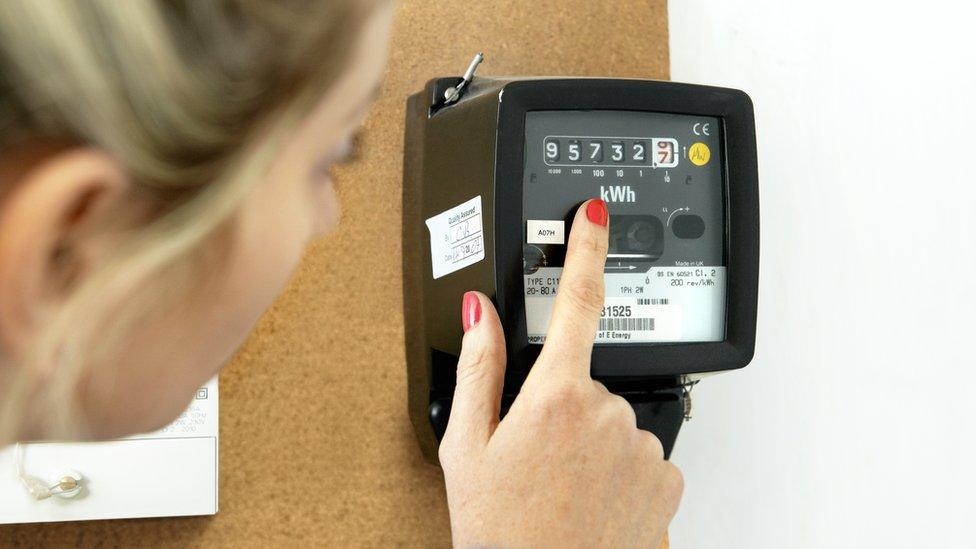
- Published9 February 2021

- Published14 April 2021

- Published3 March 2021

- Published29 April 2021

- Published27 January 2021
